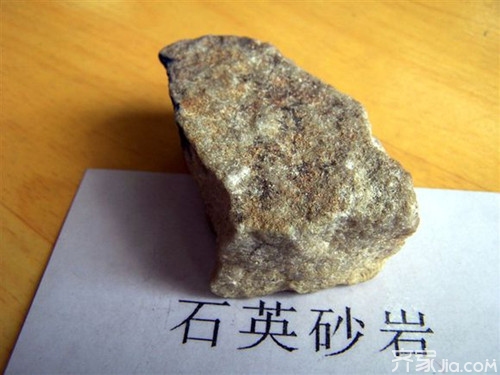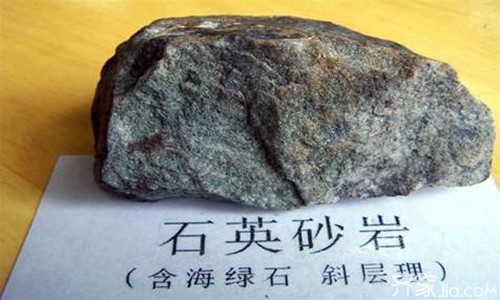During the geological history of sandstone peaks in the formation process of quartz sandstone, due to the intermittent uplift of the crust, it was subjected to long-term erosion and cutting of the flowing water. Its development has gone through four major stages: the platform, Fangshan - peak wall - peak cluster, peak forest - residual forest. The following Xiaobian introduces the relevant knowledge of quartz sandstone.

The use of quartz sandstone:
1. Glass: The main raw materials for flat glass, float glass, glass products (glass cans, glass bottles, glass tubes, etc.), optical glass, glass fiber, glass instruments, conductive glass, glass cloth, and special glass for anti-radiation.
Second, ceramics and refractory materials: porcelain billet and glaze, furnace with high silica bricks, ordinary silica bricks and silicon carbide and other raw materials. Metallurgy: raw materials or additives, fluxes for silicon metal, ferrosilicon alloys and silicon aluminum alloys.
Third, construction: concrete, cementitious materials, road materials, artificial marble, cement physical properties testing materials (ie, cement standard sand).
Chemicals: raw materials such as silicon compounds and water glass, fillers of sulfuric acid towers, and amorphous silica fine powders.
V. Machinery: The main raw material for casting sand, abrasive materials (blasting, hard abrasive paper, sandpaper, emery cloth, etc.).
6. Electronics: Electronic fillers, high-purity metal silicon, and communications fibers.
Seven, rubber, plastic: filler (can improve wear resistance).
Eight, paint: can improve the wear resistance of the paint.
Nine, is the main raw material for production of Magnesium well cover.
Ten, can be used as a rust shot blasting on the metal surface, section sand, sandblasting.
Eleventh, it is the main raw material for water filtration containers. As pure water or sewage filter material.
Quartz has a high fire resistance. Industrial quartz sand is often divided into natural quartz sand, ordinary quartz sand, refined quartz sand, high-purity quartz sand, fused silica sand, and silicon micro-powder.
Quartz sandstone color:
Sandstone is formed of quartz particles (sand) and is structurally stable, usually light brown or red, containing mainly silicon, calcium, clay and iron oxide. Sandstone is a kind of sedimentary rock, which is mainly formed by cementation of sand grains. The sand content is more than 50%. Most sandstones consist of quartz or feldspar. The main components A. Quartz composition 52% or more; B. Clay about 15%; C. Goethite about 18%; D. More than 10% of other substances.
Quartz sandstone: light color, often light yellow, grayish white, detrital minerals mainly quartz, content of more than 80%, followed by a small amount of orthoclase, micro plagioclase and acid plagioclase and a small amount of debris. Quartz grit has a high degree of roundness and good sorting; particle size with medium-fine particles is the most common. It is often a thick, stable layer with ripples and staggered bedding. Calcareous quartz sandstones sometimes contain a small amount of calcium bio-mediated shells.

The world has been exploited by Australian sandstone, Indian sandstone, Spanish sandstone, and Chinese sandstone. The color and pattern most welcomed by architects are Australian sandstones. Australian sandstone is an eco-friendly stone. Its products are characterized by no pollution, no radiation, no reflection, no weathering, no discoloration, heat absorption, heat preservation, and non-slip.
Sandstone classification:
1. Quartz sandstone: The content of quartz and siliceous debris accounts for more than 95% of the sand-level debris, and contains only a small amount or no feldspar, cuttings and heavy minerals. Detrital grains are often dominated by single-crystal quartz, with good roundness and sortability, and the highest compositional maturity and structural maturity. Less base and granular support. When the miscellaneous> 15% is called quartz sandstone. Quartz sandstone is mainly formed in a stable geotectonic environment with quasi-plainformation. The parent rock is weathered for a long time. Most of the erosion products are formed in the ocean (such as beach) environment by the strong selection of wave and water currents and repeated abrasive wear. . It is often symbiotic with carbonate deposits, consisting of quartz sandstone-ocean carbonate formations, such as the Upper Cambrian section of northern Taipei in northern China.
2. The feldspar sandstone: The feldspar debris content accounts for more than 25% of the sand-level debris. Quartz content <75%, which can contain more mica and heavy minerals. The cements are mainly calcium and iron and often contain clay hetero-groups. When the heterobasic >15%, it is an feldspathic sandstone. Debris particles are generally sorted and have medium roundness. The feldspar sandstone is often pale yellow, meat powder or greenish gray. The feldspathic sandstones can be classified into three types according to their forming conditions, namely, feldspathic sandstone, basal feldspathic sandstone, and climatic feldspathic sandstone. The feldspathic sandstone is generally located in a region where the tectonic movement is relatively strong. The parent rock is granite or granite gneiss, and the climate is dry and cold. It is mainly formed by physical weathering and formed under conditions of strong erosion and rapid accumulation. Most of them are deposited on the mainland, and there are less sea-based ones. Often deposited in front of mountains or in mountain basins. Many feldspathic sandstones have been found in the continental rift. The Tangshan Sinian in Hebei Province produces feldspathic sandstones, of which feldspar can exceed 50%.
3. Detrital sandstone: The content of rock debris accounts for more than 25% of the sand-level debris. The content of quartz is <75%, and it can contain a small amount of feldspar (<10%). The content of heavy minerals is high and the types are complex. Cements are often siliceous and carbonated and often contain impurities. When the miscellaneous mass is more than 15%, it is a debris-containing sandstone. The roundness and sortability of the crumb particles are moderate to poor. Often light grey, grayish green to dark gray. The debris composition is closely related to the nature of the parent rock in the source area, and the rock type can be further divided according to the composition of the rock debris. Detrital sandstone is a type of sandstone with low compositional maturity and structural maturity, which is mainly formed in piedmont or intermountain depressions with strong structural changes.

The above is related to the color of quartz sandstone. If you want to know more related information, please pay more attention to this site and we will provide you with more complete, more detailed and updated information.
Decoration use decoration color
Specification
Apparent density: 2.10~2.30g/cm3
Tensile strength: 15.0Mpa
Ultimate elongation: 150%
PTFE is principally used as a gasket material because of it's capability to remain unaffected by the majority of chemicals used in industry. It is also classified, in most cases, as a food grade material, making it acceptable to both medical and food production industries. There are three basic types of PTFE Gasket materials. Virgin PTFE , filled PTFE and expanded PTFE .Features
Acid and alkali resistant
Chemical resistant
Has minimum friction coefficient of all know pure material
Non-viscous, no aging
Now molds can be made according to customers requirements.
Virgin PTFE is by far the least expensive of the three varieties, and is used in most general applications. Filled PTFE is a gasket material with a virgin PTFE base to which a substance is added during manufacture to improve the sealing characteristics of PTFE . This "filler" usually is glass or graphite particles although ceramics has sometimes been used. The resulting gasket material is strong, yet highly compressible with very good, though not universal, chemical resistance.
Expanded PTFE is virgin PTFE to which a stress resistance has been added by means of molecular rearrangement during manufacture. This process ensures that the molecular chains from which the PTFE is constructed, do not arrange themselves into set patterns. This means that expanded PTFE possesses no structural weakness (grain) and expands and contracts equally in all directions. Because no additives are required, expanded PTFE also possesses the unique chemical resistance of virgin PTFE.
PTFE Gasket
Glass Fiber PTFE Gasket,PTFE Seal Gasket ,White PTFE Gasket,Black PTFE Nylon Gasket
ZHENJIANG CHUNHUAN SEALING MATERIALS CO.,LTD(GROUP) , https://www.chsealing.com